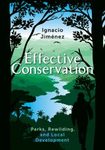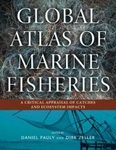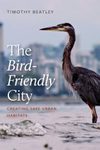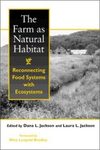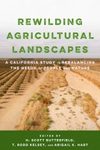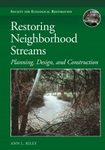![Evolution in a Toxic World Evolution in a Toxic World]()
Click to have a closer look
About this book
Contents
Customer reviews
Related titles
About this book
With BPA in baby bottles, mercury in fish, and lead in computer monitors, the world has become a toxic place. But as Emily Monosson demonstrates in her groundbreaking new book, it has always been toxic. When oxygen first developed in Earth's atmosphere, it threatened the very existence of life: now we literally can't live without it. According to Monosson, examining how life adapted to such early threats can teach us a great deal about today's (and tomorrow's) most dangerous contaminants. While the study of evolution has advanced many other sciences, from conservation biology to medicine, the field of toxicology has yet to embrace this critical approach.
In Evolution in a Toxic World, Monosson seeks to change that. She traces the development of life's defense systems – the mechanisms that transform, excrete, and stow away potentially harmful chemicals – from more than three billion years ago to today. Beginning with our earliest ancestors' response to ultraviolet radiation, Monosson explores the evolution of chemical defenses such as antioxidants, metal binding proteins, detoxification, and cell death.
As we alter the world's chemistry, these defenses often become overwhelmed faster than our bodies can adapt. But studying how our complex internal defense network currently operates, and how it came to be that way, may allow us to predict how it will react to novel and existing chemicals. This understanding could lead to not only better management and preventative measures, but possibly treatment of current diseases. Development of that knowledge starts with this pioneering book.
Contents
Preface
Acknowledgments
Chapter 1: An Introduction
PART 1 ELEMENT
Chapter 2: Shining a Light on Earth’s Oldest Toxic Threat?
Chapter 3: When Life Gives You Oxygen, Respire
Chapter 4: Heavy Metal Planet
PART 2 ANIMAL
Chapter 5: It Takes Two (or More) for the Cancer Tango
Chapter 6: Chemical Warfare
Chapter 7: Sensing Chemicals
Chapter 8: Coordinated Defense
PART 3 HUMAN
Chapter 9: Toxic Evolution
Chapter 10: Toxic Overload?
Appendix: Five Recent Additions to the Chemical Handbook of Life
Notes
Selected Bibliography
Index
Customer Reviews
By: Emily Monosson(Author)
223 pages, b/w illustrations
"The book should appeal to a broad audience and will spur future interest in the fields of evolutionary toxicology [...] well-written"
- Ecology
"This book is utterly fascinating, covering all sorts of toxins from the beginning of life on Earth, and continuing through modern times and predicting what the future may hold."
- The Guardian GrrlScientist blog
"Exceedingly detailed and thoroughly researched treatise [...] Monosson's prose is necessarily complex as she gives her subject its scientific due, but for those who seek a thorough understanding of this timely issue, she offers a text solidly grounded in both history and contemporary analysis. Patient readers will be well rewarded."
- Booklist
" [...] it does provide detailed information about how life evolved to survive everything that our planet, other organisms and its own cells can throw at it through some fascinating examples."
- Science Illustrated
"Monosson posits that the field of toxicology should look to evolution to understand biological responses to today's chemical threats."
- Conservation
"A toxicologist traces how life evolved to deal with toxic substances and how this plays into chemical exposures today."
- Science News
"The book is written in an accessible style and is aimed at the general public, as well as at scientists. The third-person scientific writing is interspersed with personal anecdotes and thoughts, which should help to make the book more appealing."
- Bioscience
"Evolution in a Toxic World addresses the challenges posed to life on earth by a plethora of toxic threats. There are chapters dedicated to ozone, oxygen, metals, assorted chemical agents, cancer, etc. [...] The book serves as an excellent introduction to the topic of toxicology and evolution for the college student or general reader."
- Science Books and Films
"This 222-page book is a thought-provoking summary of an important but often ignored subject matter, evnironmental toxicology."
- Barney Lipscomb, Journal of the Botanical Research Institute of Texas
"Evolution in a Toxic World describes how biological defenses have evolved over time, responding to challenges of an ever-changing environment. Monosson draws on 'lessons learned' to address the key question of whether we can defend ourselves against the myriad agents that we introduce into the environment. In this engaging and sweeping book, she looks for the answer."
- Jonathan M. Samet, Director, Institute for Global Health, University of Southern California
"Dr. Monosson has provided an original synthesis of this intriguing and often neglected topic. She uses fascinating examples to illustrate how an evolutionary perspective enriches our understanding of chemicals and their myriad interactions with living systems."
- Mark E. Hahn, Senior Scientist, Woods Hole Oceanographic Institution
"An intriguing and thought-provoking synthesis of how environmental stressors have shaped life on the planet. The book challenges us to consider that genomic diversity not only tells us about the past, it helps us predict the future: how different groups of organisms will respond to new environmental stressors, including those of human origin."
- L. Earl Gray, Research Biologist
"Well written, very readable, thought-provoking. Highly recommended reading for environmental scientists and non-scientists."
- Peter M. Chapman, Principal, Golder Associates Ltd





















![Kame no Kōra wa Abarabone: Jintai de Arawasu Ugokumonozukan [Turtle Shells Have Ribs: A Picture Book of Animal Anatomy Represented by the Human Body]](http://mediacdn.nhbs.com/jackets/jackets_resizer_medium/24/249897.jpg?height=150&width=99)
